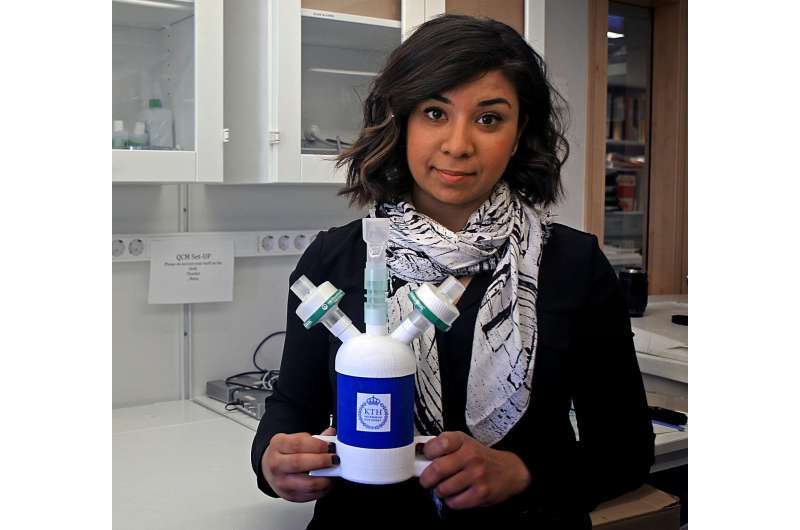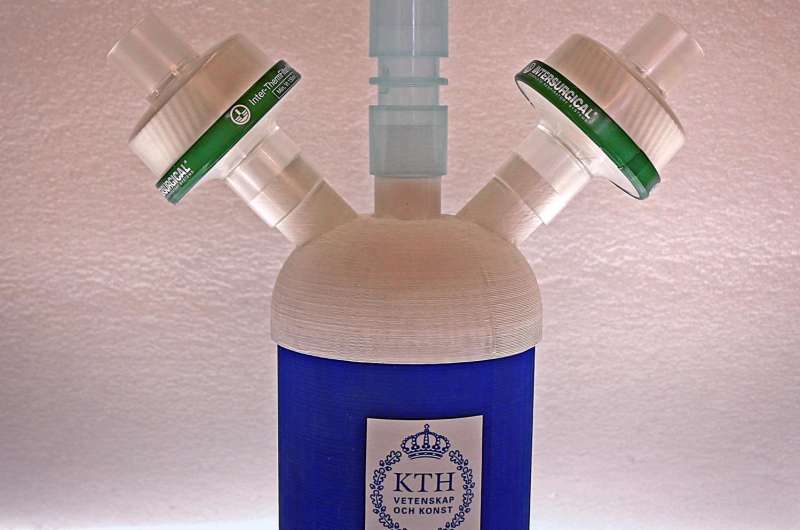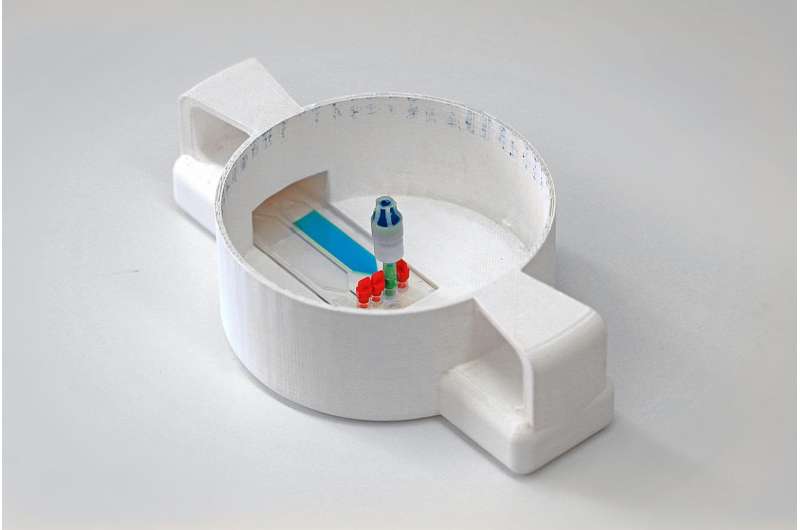New flu test easy as breathing, with faster results

A method for diagnosing flu virus from breath samples could soon replace invasive nasal swabs and deliver better results faster.
There's a short window for detecting influenza virus, because as the infection takes hold, the concentration of the virus lessens. So if the patient isn't tested soon after exposure, conventional methods run the risk of a giving a false negative result.
A new method under development at KTH Royal Institute of Technology in Sweden, however, could provide sensitive detection of the virus much faster than the nasal swabbing tests used today.
All it takes is for patients to breathe into a bottle.
The EU-funded project is two-fold, and results were published this month in PLOS One and ACS Applied Materials & Interfaces. Led by KTH Professor Wouter van der Wijngaart, a research team from KTH – in collaboration with the University of Antwerp, the University of Leuven, and Janssen Diagnostics – first successfully tested a system for collecting virus particles from patients' breath, in vitro and in pre-clinical studies. In a parallel effort, the researchers have developed a method for identifying the influenza virus' nuclear proteins.

van der Wijngaart describes the "femtolitre well array biosensor" as a configuration of tens of thousands of wells, each smaller than the size of a single red blood cell, that capture the proteins. This part of the EU-funded project has proven successful in singling out non-virus molecules, but van der Wijngaart says development will continue for some time.
"Now we have proven that the two crucial technologies work independently from one another," says Laila Ladhani,
The recent results show that the technique would be capable of detecting influenza infection after the patient breathes for only a few minutes into the container. Highly charged needles inside the bottle ionize the micro-sized droplets of water that carry the virus in the breath, and these are then attracted to an electrically grounded droplet of liquid in the bottom of the chamber.
The next step is to break open the virus cell's walls, using the common lab process of lysis, and then hunt down the nuclear proteins of the virus. The scientists, which include Gaspard Pardon and KTH PhD student Reza Shafagh, mix the proteins in a fluid with magnetic antibody-coated beads that the proteins bind to.

The beads are flushed into the well array and when a magnet is placed underneath the array, and the proteins become fluorescent, which makes them easy to detect with a camera.
"This kind of test will enable doctors to treat severely threatened patients the right way, and it will be valuable for use in clinical research," Van Der Wijngaart says. "It's harder than finding a needle in a haystack, but it can be done."
More information: Deborah Decrop et al. Single-Step Imprinting of Femtoliter Microwell Arrays Allows Digital Bioassays with Attomolar Limit of Detection, ACS Applied Materials & Interfaces (2017). DOI: 10.1021/acsami.6b15415
Laila Ladhani et al. Sampling and detection of airborne influenza virus towards point-of-care applications, PLOS ONE (2017). DOI: 10.1371/journal.pone.0174314
Journal information: PLoS ONE , ACS Applied Materials and Interfaces
Provided by KTH Royal Institute of Technology




















